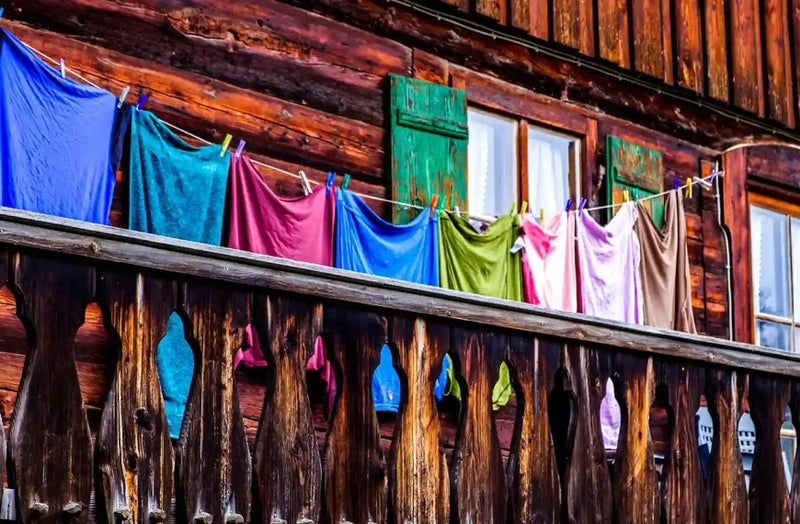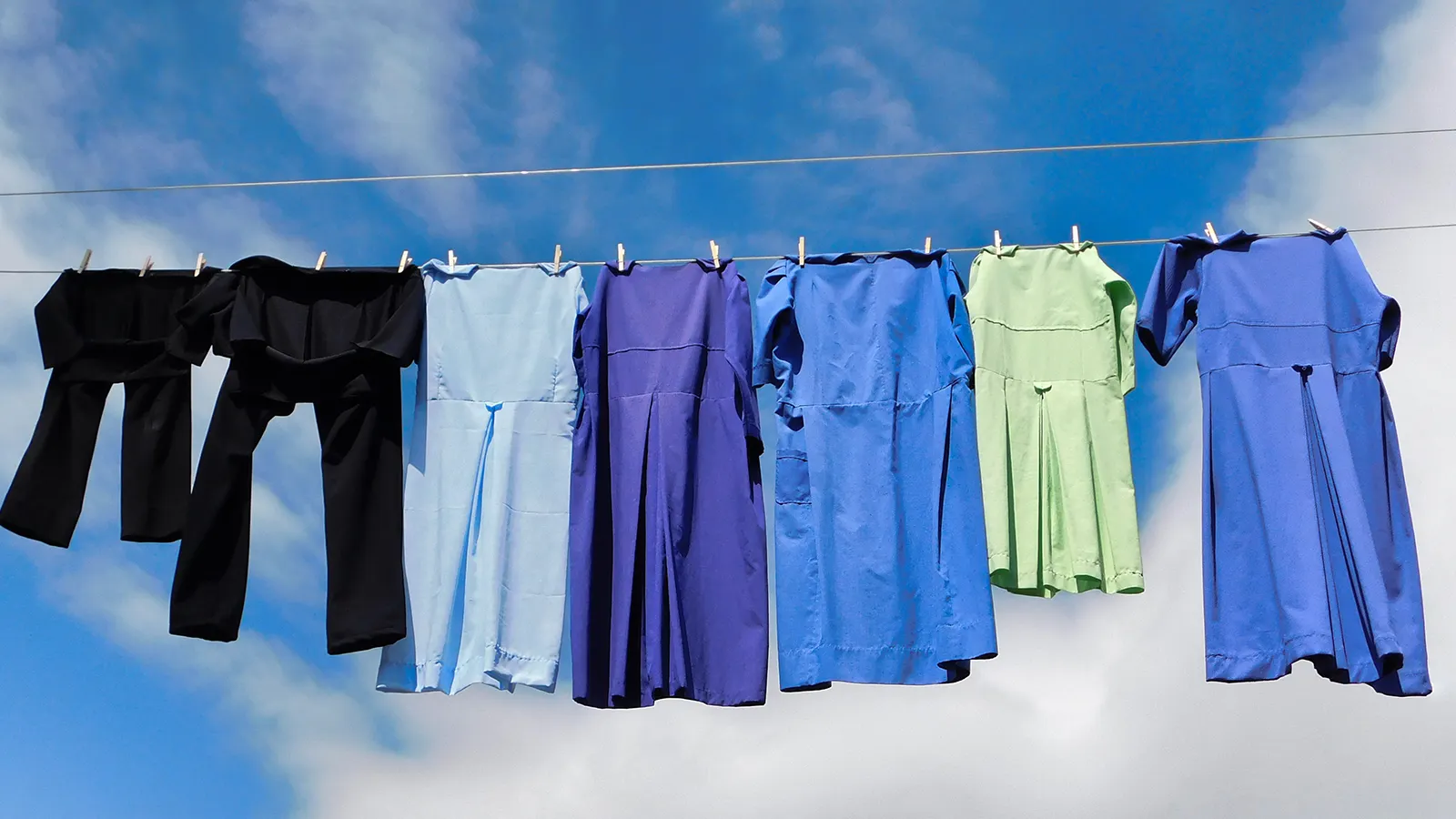
So, you've accidentally turned your favorite white shirt into a lovely shade of pink. Or maybe your jeans have seen better days and need a wardrobe refresh. Fear not, my fellow fabric fumblers, because today, we're diving into the whimsical world of fading fabric.
From bleach baths to sandpaper scrubs, we have all the quirky tips and tricks to help you achieve that faded fashion statement. Get ready to embrace the art of fading and breathe new life into your wardrobe with a touch of humor and creativity.
Key Takeaways
- Work in a well-ventilated area and wear protective gear to prevent respiratory irritation and skin exposure to bleach.
- Dilute the bleach solution and dispose of it safely to prevent environmental damage and ensure successful fabric fading.
- To achieve unique faded effects, combine sunlight exposure, bleach solution, harsh detergents, and abrasion methods.
- Experiment with different methods and ratios of bleach solution to achieve the desired level of fading and distress on fabric.
Safety Precautions for Fading Fabric
Remember that safety comes first when you're working with bleach to fade your fabric.
You'll need to take precautions to protect yourself and the environment from the harsh chemicals involved.
Work in a Well-Ventilated Area
When using bleach to fade fabric, working in a well-ventilated area is important to avoid breathing in harmful fumes. Bleach fumes can cause respiratory irritation and discomfort, so good ventilation helps to disperse these vapors.
Don't underestimate the importance of ventilation. It's a crucial safety measure to protect against harmful chemical exposure.
Protective Gear (gloves, goggles, apron)
You should don protective gear, including rubber gloves, goggles, and an apron, to safeguard your skin and clothing from bleach exposure. Bleach can cause severe skin irritation and chemical burns, so wearing protective gear is crucial to prevent these risks.
The rubber gloves will shield your hands from direct contact with bleach, while the goggles will protect your eyes from splashes. The apron will prevent your clothing from getting stained or damaged.
Proper Disposal of Chemicals
After completing the fabric fading process, dispose of the leftover bleach solution by diluting it with water before pouring it down the drain to prevent environmental harm.
Make sure to rinse all containers used for the fading process thoroughly before recycling or reusing them.
Store chemicals away from children and pets until proper disposal can be arranged.
How to Fade Fabric: 4 Common Methods
You're now ready to explore the various methods to fade fabric, and there are several techniques to choose from.
Method 1: Sunlight Exposure
Exposure to direct sunlight is a natural and effective way to fade fabric. The UV light it contains breaks down the dye-fabric bonds, gradually causing colors to lose their vibrancy. Since dark colors absorb more light and heat, they'll fade faster when exposed to sunlight.
To achieve even fading, consider rotating cushions and fabric items periodically. Remember, UV light is the primary culprit behind color fading. So, keep your fabric items out of direct sunlight to protect them.
Method 2: Bleaching
To achieve a faded effect, submerge your fabric in a bleach solution with a 1:10 bleach-to-water ratio, monitoring the process to prevent over-bleaching. The fading time can range from 10 seconds to 15 minutes.
If you need a lighter shade, add more bleach, but don't exceed a 1:5 bleach-to-water ratio. After fading, soak the fabric in a chlorine neutralizer to prevent further fading and eliminate any harsh odors.
Method 3: Washing with Harsh Detergents
Harsh detergents can be your ally in fading fabric. They contain strong chemicals to break down the bonds between dye and fabric. When you wash your fabric with harsh detergents, you're essentially accelerating the fading process.
The strong chemicals in these detergents gradually break down the dye, causing the color to fade. Be careful, though—harsh detergents can lead to significant fading, so testing the fabric first is essential. To achieve the desired level of fading, you can repeat the washing process several times.
Method 4: Sanding or Abrasion
You can achieve a distressed or faded look on fabric by using sandpaper or a pumice stone to wear down the fibers physically through sanding or abrasion. This method allows you to control the degree of fading, depending on the pressure you apply and the fabric you're working with.
Be careful not to damage the fabric excessively, as it can be easy to overdo it. Sanding or abrasion can create a unique, vintage aesthetic that adds character to your fabric.
Tips and Tricks for a Successful Fabric Fading
Now that you've learned the methods to fade fabric, it's time to get creative with some tips and tricks to take your fabric to the next level.
Combining Methods for Unique Effects
By combining bleach fading with other techniques, such as tie-dye or resist-dyeing, you can create unique patterns and effects on your fabric, allowing for experimentation with diverse outcomes.
For instance, you can layer bleach fading with sun fading, chemical fading, and distressing to achieve a custom, artistic look. Stencils, stamps, or spray bottles can introduce intricate designs and textures.
What's more, mixing bleach fading with fabric painting or screen printing enables you to create multidimensional and personalized fabric creations. Don't be afraid to experiment with varying concentrations of bleach, different soaking times, and alternative fading agents to achieve the desired effect.
Testing a Small Area Before Full Application
Before applying bleach to the entire fabric, take a few minutes to test a small, inconspicuous area to ensure the desired fading effect and prevent any costly mistakes.
This crucial step helps you determine the optimal bleach concentration and soaking time for your fabric. Testing a small area will reduce the risk of over-fading or irreversibly damaging your fabric. You'll also be able to adjust to achieve the desired color outcome.
Maintaining the Faded Look Over Time
You've successfully achieved a beautifully faded fabric, but to keep it looking its best, you'll need to take some precautions to maintain the faded look over time.
To prevent further fading, wash your faded clothes inside out in cold water. Air drying is also necessary, as it helps preserve the faded color and texture. Avoid using harsh chemicals or bleach in subsequent washes, as they can speed up fading.
When storing your faded fabric, keep it away from direct sunlight. To maintain the softness and appearance of your faded fabric, consider using a gentle fabric softener or fabric refresher spray.
Conclusion
You've experimented with four different methods to fade your fabric. Remember always to follow safety precautions when working with chemicals and abrasives.
With patience and practice, you'll achieve unique, personalized, faded effects on your fabrics.
Learn more about fabric knowledge at Longan Craft Blog, and dive into the fabric world with Longancraft!
FAQs
How Do I Fade Fabric Quickly?
To speed up the process, try submerging your fabric in a 1:10 bleach solution. Monitor it closely and add more bleach if needed, but don't exceed a 1:5 ratio.
How to Fade Fabric Color Without Bleach?
You can fade fabric color without bleach by using natural methods like sunlight exposure, vinegar, or lemon juice. Soak the fabric in vinegar or mix lemon juice with water for a gentle, chemical-free fade.
Is There a Way to Lighten Fabric?
You can try exposing your fabric to direct sunlight, washing it with harsh detergents, or using enzymes to break down the dye.
How Do I Distress and Fade Fabric?
You'll distress fabric by aggressively washing and drying it multiple times. Then, use techniques like sanding, cutting, or burning to fray edges and create holes, giving your fabric a worn, vintage look.





0 comments